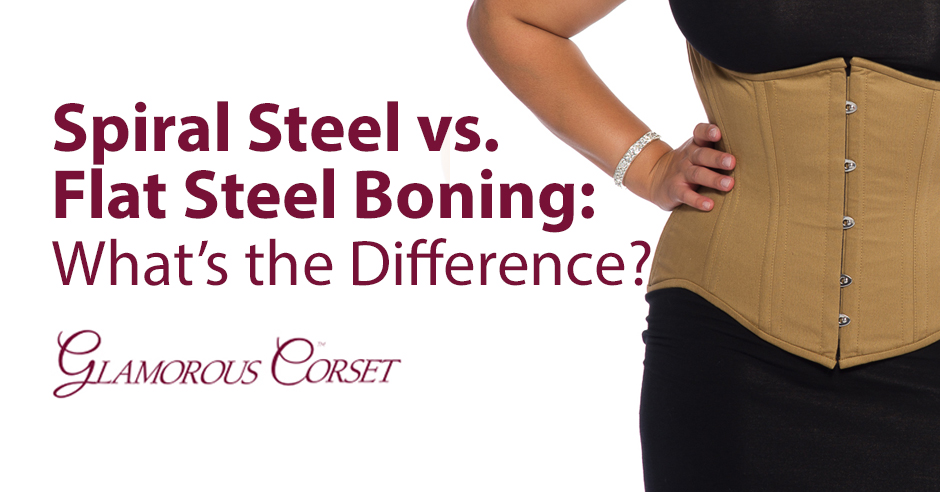Blog
Spiral Steel Boning vs. Flat Steel Boning: What’s the Difference?
A corset without steel bones is like a car without gas – it simply doesn’t work. Material and lacing are important, but it’s the steel bones that make waist-training your abdomen into an hourglass shape possible. Why, then, is there so much about misinformation about this most important element?
Confusion about the boning of corsets is nothing new – in fact, it can be traced all the way back to the 16th Century, when we started calling them “bones” in the first place! Back then, corsets were made with “whalebones,” but this material wasn’t actually bone at all. Rather, it was baleen, which is found in whale’s jaws and used to filter their food. This rigid, but flexible material was perfect for lining a corset.
Modern-day corsets aren’t made from real whale parts, thank goodness, but there are still myths about the spiral steel bones and flat steel bones found in waist-training corsets. Here, we’ll explain some pros and cons of each, as well as our corset collection’s unique solution.
Pros of Flat Steel Boning
Flat steel boning is made by stripping steel sheets, then carefully rounding the sharp edges. As a result, flat boning isn’t “poky,” as you might expect, but it is very rigid. This provides strong support for your abdomen and back while waist-training. For those who are wearing corsets to help with back pain and posture, the inflexibility of steel bones will go a long way in helping to form firm muscles.
Cons of Flat Steel Boning
Because they are so rigid, some find flat bones to be uncomfortable, especially when they are found on the front of a corset. Curvy women in particular have found corsets made with 100% flat steel bones to be a bit cage-like.
Pros of Spiral Steel Boning
Many people imagine a spring when thinking of spiral steel bones, but they are actually flattened coils. These coils are more flexible than flat steel bones, which gives the wearer more mobility. As a result, corsets made entirely of spiral steel bones are often preferred by dancers and stage performers.
Cons of Spiral Steel Boning
Some may find spiral steel bones to be too flexible. Corsets, after all, are meant to provide support. If you’re looking for rigid, unwavering support, you may prefer flat steel bones.
Our Solution – the Best of Both Worlds!
There are certainly benefits and advantages to flat and spiral steel bones – which is why our entire corset collection is made with both! Here’s how it works:
The back of our corsets are fitted with four flat steel bones. This provides sturdy back support, which, over time, helps strengthen your back muscles and lends to better waist-training results. However, spiral steel bones are also inserted throughout the entire corset, which not only provides mobility, but allows the corset to mold to your individual shape for comfort and function. In addition, a solid metal rod in the busk, or front of the corset, keeps the fabric taunt across the abdomen.
By combining the best of both worlds, our corsets are ideal for waist-training. They are comfortable enough to wear during your daily routine, but also have a rigidity and form-fitting design that brings huge results. If you want to get started on your waist-training journey but don’t know where to begin, click here.
As always, don’t hesitate to contact us with any questions. You can also follow us on Facebook to take part in our monthly giveaway!

My name is Rachel, I am the owner of Glamorous Corset, a small business founded by me in 2010. Back In 2005, I was in a car accident that left me with a herniated disk. Much to my surprise I learned steel boned corsets were beneficial to several medical injuries including mine. I was always intrigued with corsetry, their history and their beautiful aesthetic. I love sharing knowledge about corsets, educating my wonderful readers and breaking the negative stigma related to corsetry. In combination with my years of research and personal experience I hope my articles are useful and can help anyone who has struggled with some of the same things I have. More about me…


